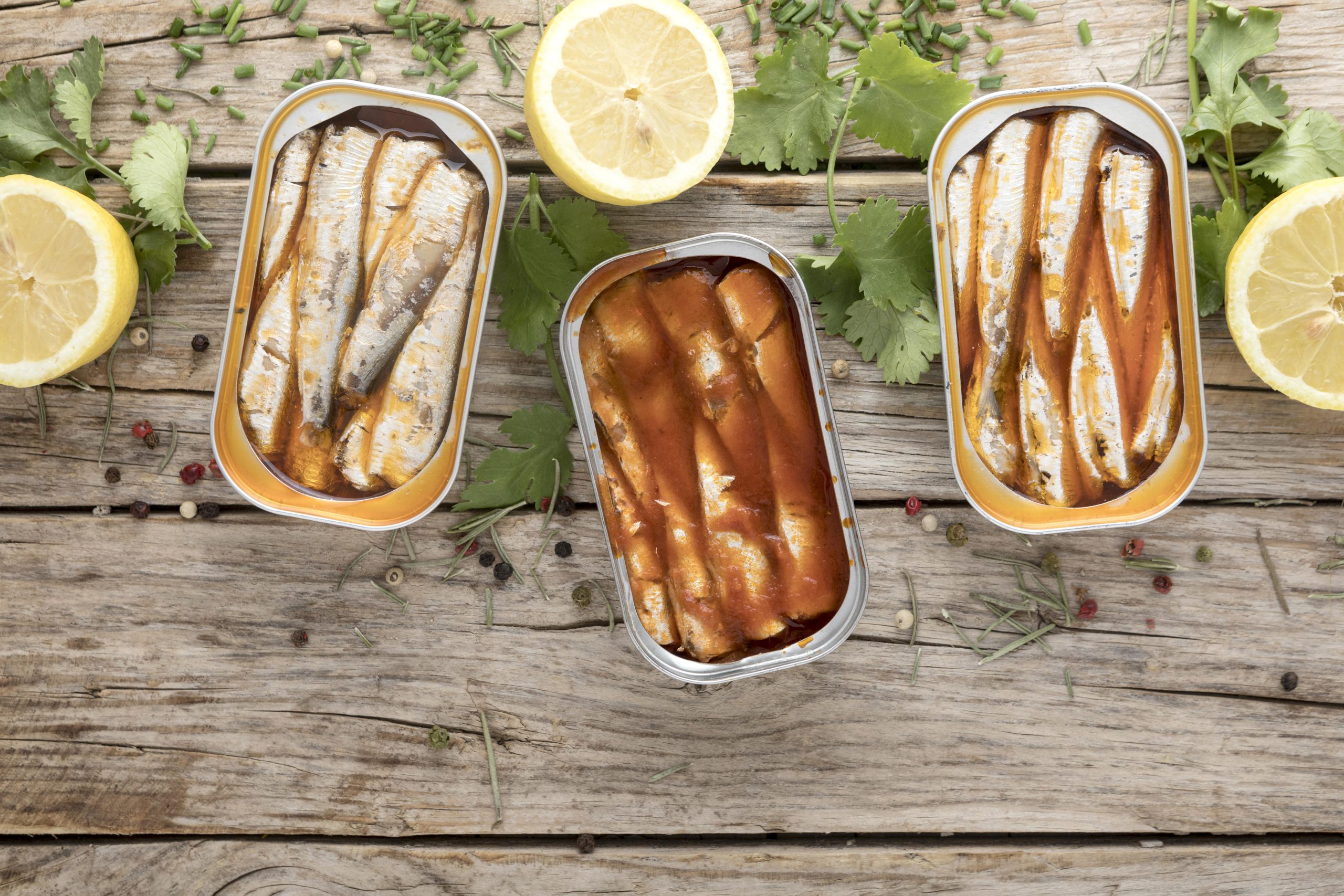Have you ever wondered why canned fish tends to be dry? It’s a common issue that many people experience when they open a can of fish, expecting moist and flavorful meat, only to be disappointed. But fear not, there are reasons behind this dryness, and in this discussion, we will uncover the factors that contribute to it. By understanding these factors, you’ll not only gain insight into why canned fish can be dry but also discover valuable tips to ensure that your next can of fish is moist, delicious, and worth savoring. So, let’s dive into the world of canned fish and uncover the secrets behind its dryness.
Common Reasons for Dryness in Canned Fish
Dryness in canned fish can occur due to various factors during the production process. Processing techniques play a crucial role in determining the moisture retention and overall fish quality in canned products. One of the main reasons for dryness is the use of high temperatures during canning, which can cause the fish to lose moisture. Additionally, inadequate sealing of the cans can lead to moisture loss over time. It is important to ensure that the canning equipment is properly calibrated to maintain the ideal temperature and pressure for preserving the moisture in the fish. Another factor to consider is the cooking method used prior to canning. Fish that is overcooked or cooked at high temperatures can result in dryness in the final product. To prevent dryness in canned fish, it is essential to use appropriate processing techniques, ensure proper sealing of cans, and carefully control the cooking methods to retain the moisture and quality of the fish.
Impact of Processing Methods on Canned Fish Moisture
The moisture content in canned fish is significantly affected by the specific processing methods employed during production. Several factors play a role in determining the moisture level of canned fish, including the impact of brining, the influence of the canning process on texture, the effect of oil content on dryness, the importance of proper sealing, and the role of additives in maintaining moisture levels.
To better understand these factors, let’s examine their impact on canned fish moisture in a table:
| Processing Method | Impact on Moisture Content |
|---|---|
| Brining | Increases moisture content |
| Canning Process | Can affect texture and moisture |
| Oil Content | Higher oil content can retain moisture |
| Proper Sealing | Preserves moisture levels |
| Additives | Helps maintain moisture levels |
Brining, a process of soaking fish in a saltwater solution, increases the moisture content in canned fish. This helps to retain the natural juiciness of the fish.
The canning process itself can influence both the texture and moisture content of the fish. Improper processing techniques or excessive heat can cause the fish to become dry.
The oil content in canned fish plays a crucial role in preventing dryness. Higher oil content helps to retain moisture and ensures a succulent texture.
Proper sealing of the cans is essential for preserving the moisture levels in canned fish. A tight seal prevents moisture loss and maintains the freshness of the fish.
Additives, such as water-binding agents or humectants, can be used to maintain moisture levels in canned fish. These additives help to prevent dryness and improve the overall quality of the product.
Role of Salt Content in Canned Fish Dryness
To further explore the factors affecting the moisture content of canned fish, let’s now delve into the role of salt content in determining its dryness. Salt concentration plays a crucial role in the preservation and texture enhancement of canned fish. The addition of salt in the form of a brine solution not only acts as a preservative but also affects the overall moisture retention in the fish.
Salt works by drawing out moisture from the fish and creating a hypertonic environment, which inhibits the growth of spoilage-causing microorganisms. However, excessive salt concentration can lead to excessive moisture loss and result in dryness.
Achieving the right balance of salt concentration is essential for maintaining the desired texture and moisture content in canned fish. Quality control measures are implemented to ensure that the salt content is within the specified range. This involves careful monitoring and testing of the brine solution to ensure consistency and effectiveness in preserving the fish.
The Effects of Cooking Time and Temperature on Canned Fish Texture
Cooking time and temperature significantly impact the texture of canned fish. Proper cooking techniques are crucial for achieving desired texture, moisture retention, flavor enhancement, and overall quality control. Texture analysis plays a vital role in assessing the effects of cooking parameters on canned fish.
When canned fish is cooked at higher temperatures for longer durations, it tends to become dry and lose its natural moisture. This can result in a tough and rubbery texture. On the other hand, cooking at lower temperatures for shorter periods can help retain moisture and maintain a tender texture.
Moisture retention is an essential factor in ensuring the quality of canned fish. Cooking at the right temperature and for the appropriate duration allows the fish to retain its natural juices, resulting in a more succulent and flavorful product.
Flavor enhancement is another aspect affected by cooking time and temperature. Properly cooked canned fish exhibits a balanced flavor profile with the right amount of seasoning and natural fish taste. Overcooking can lead to a loss of flavor and a less enjoyable eating experience.
Quality control measures, such as regular texture analysis, can help ensure that canned fish meets the desired standards. Texture analysis involves evaluating factors like firmness, tenderness, and juiciness, providing valuable insights into the effects of cooking parameters on the final product.
Packaging Factors That Affect Canned Fish Moisture Levels
Packaging plays a crucial role in determining the moisture levels of canned fish. Various factors can affect the moisture retention in canned fish, including packaging innovations, moisture retention techniques, quality control measures, and the use of moisture locking additives.
Packaging innovations involve the development of new materials and designs that can better preserve the moisture content of canned fish. These innovations may include improved can materials, such as coatings that prevent moisture loss, or the use of vacuum-sealed packaging to minimize moisture evaporation.
Moisture retention techniques, such as precise sealing processes and the use of moisture barriers, are employed to ensure that the canned fish retains its natural moisture. These techniques help to prevent moisture loss during storage and transportation, thereby maintaining the desired texture and taste.
Quality control measures are implemented throughout the packaging process to ensure that the canned fish meets the desired moisture levels. This includes regular testing and monitoring of moisture content during production, as well as strict adherence to standards and regulations.
Moisture locking additives, such as oils or brines, are sometimes used to help retain moisture in canned fish. These additives can enhance the flavor and texture of the fish while reducing the risk of dryness.
Understanding consumer preferences in canned fish texture is also essential in determining the appropriate packaging factors. Some consumers may prefer a drier texture, while others may prefer a more moist and succulent texture. Packaging considerations should take into account these preferences to ensure customer satisfaction.
Understanding the Shelf Life and Storage Conditions of Canned Fish
The moisture levels of canned fish are closely related to its shelf life and storage conditions. Proper storage techniques for canned fish are essential to maintain its moisture content and overall quality. Factors such as temperature, humidity, and exposure to light can affect the moisture content of canned fish. It is important to store canned fish in a cool, dry place to prevent moisture loss. The role of additives, such as oils and brines, is crucial in preserving moisture in canned fish. These additives help to maintain the moisture levels and prevent the fish from becoming dry. The canning process itself also has an impact on the texture of canned fish. The high temperature and pressure used during canning can cause some moisture loss, resulting in a drier texture. To rehydrate dry canned fish for optimal taste and texture, you can soak it in water or other liquids, such as broth or lemon juice. This will help to restore some of the moisture and improve the overall quality of the fish. By following proper storage techniques and rehydrating methods, you can ensure that your canned fish remains moist and delicious.
Tips for Choosing and Preparing Moist Canned Fish
To choose and prepare moist canned fish, consider the quality of the fish, the type of packaging, and the rehydration method. Here are some tips to help you retain moisture and enhance flavor:
- Quality of the fish: Look for high-quality fish that has been properly processed and canned. Freshness and the right balance of salt and oil are important factors in determining the moisture content of the fish.
- Type of packaging: Opt for cans that are well-sealed and free from any damage or bulging. This ensures that the fish is protected from air and moisture, preserving its moisture content.
- Rehydration method: If the canned fish seems dry, you can rehydrate it by soaking it in a brine solution or a flavorful liquid like broth or wine. This helps to add moisture back into the fish and enhances its flavor.
- Cooking techniques: Choose cooking methods that help to retain moisture, such as steaming or poaching the fish. Avoid overcooking, as this can result in dryness.


